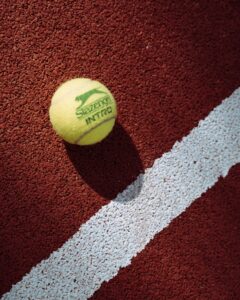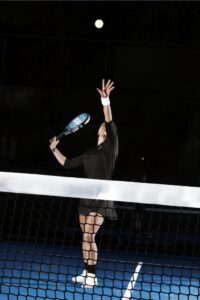Understanding the Return Rules in Padel: A Comprehensive Guide
3 min read
Understanding the Return Rules in Padel: A Comprehensive Guide
Padel, the popular racquet sport that originated in Mexico, has gained tremendous popularity worldwide in recent years. Its combination of elements from tennis and squash makes it incredibly fun and exciting to play. However, understanding the return rules in padel is crucial to becoming a proficient player. In this comprehensive guide, we will explore the various return rules in padel and provide you with a solid foundation to excel in this sport.
What is Padel?
Before diving into the return rules, let’s first understand the basics of padel. Imagine a tennis court, but with walls made of glass and metal mesh surrounding the court. Padel is typically played in doubles, and each team tries to hit the ball over the net to the opponent’s side, similar to tennis.
Now that you have a basic understanding of padel, let’s explore the return rules that govern this exhilarating sport:
1. Serving and Returning
Just like in tennis, each point in padel begins with a serve. The serve must be hit underhand, and the ball must bounce on the server’s side first before crossing over to the opponent’s side. However, unlike tennis, the serve in padel can be directed anywhere within the serving square.
Once the serve is successfully executed, the opponent must return the ball after it bounces. The return must also be hit underhand and bounce on the receiver’s side before crossing over the net.
2. Double Bounce Rule
One of the unique aspects of padel is the double bounce rule. After the serve, both teams must let the ball bounce once on their side before returning it. This rule ensures a fair and strategic game, allowing for longer rallies and exciting exchanges.
Remember, the double bounce rule applies to both the serve and the return. It adds an extra layer of strategy, as players must position themselves strategically to anticipate and react to the ball’s bounces.
3. Wall and Net Interaction
Unlike in tennis, the walls surrounding the padel court are very much in play. Players can use the walls to their advantage by hitting the ball against them. However, it’s important to note that the ball must first bounce on your side before hitting the wall. Hitting the ball directly against the wall without a bounce is considered a fault.
Similarly, players can use the net to their advantage when returning a shot. If the ball hits the net but still manages to successfully reach the opponent’s side, it is considered a valid return.
4. Faults and Let Serves
Just like in any sport, padel has its fair share of faults. A fault can occur when the server makes an incorrect serve or violates any of the return rules. For example, hitting the ball out of bounds, hitting the ball directly against the wall without a bounce, or failing to let the ball bounce before returning are all considered faults.
In some cases, a let serve may be called. This happens when the ball hits the net during a serve but still manages to land in the correct serving square. The server is then given another chance to serve without incurring a fault.
Understanding the return rules in padel is essential to enjoy this dynamic sport to the fullest. By familiarizing yourself with the serving and returning guidelines, the double bounce rule, the wall and net interactions, and the concept of faults and let serves, you will be well-equipped to engage in thrilling padel matches.
So, grab your padel racket, find a court, and start practicing. Remember, the more you play and learn the intricacies of the return rules in padel, the better you’ll become. Good luck!






